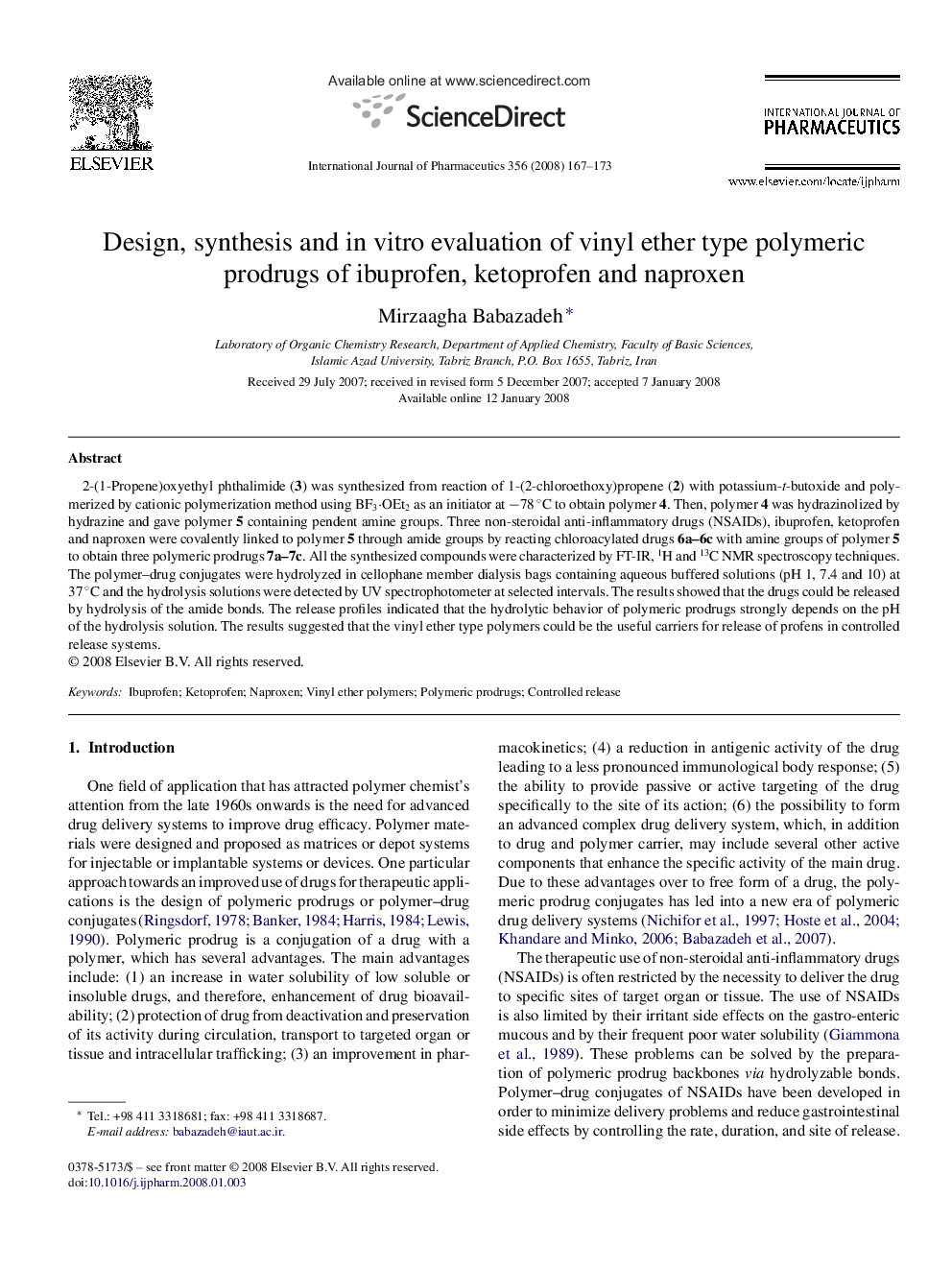| Article ID | Journal | Published Year | Pages | File Type |
|---|---|---|---|---|
| 2505444 | International Journal of Pharmaceutics | 2008 | 7 Pages |
2-(1-Propene)oxyethyl phthalimide (3) was synthesized from reaction of 1-(2-chloroethoxy)propene (2) with potassium-t-butoxide and polymerized by cationic polymerization method using BF3·OEt2 as an initiator at −78 °C to obtain polymer 4. Then, polymer 4 was hydrazinolized by hydrazine and gave polymer 5 containing pendent amine groups. Three non-steroidal anti-inflammatory drugs (NSAIDs), ibuprofen, ketoprofen and naproxen were covalently linked to polymer 5 through amide groups by reacting chloroacylated drugs 6a–6c with amine groups of polymer 5 to obtain three polymeric prodrugs 7a–7c. All the synthesized compounds were characterized by FT-IR, 1H and 13C NMR spectroscopy techniques. The polymer–drug conjugates were hydrolyzed in cellophane member dialysis bags containing aqueous buffered solutions (pH 1, 7.4 and 10) at 37 °C and the hydrolysis solutions were detected by UV spectrophotometer at selected intervals. The results showed that the drugs could be released by hydrolysis of the amide bonds. The release profiles indicated that the hydrolytic behavior of polymeric prodrugs strongly depends on the pH of the hydrolysis solution. The results suggested that the vinyl ether type polymers could be the useful carriers for release of profens in controlled release systems.
